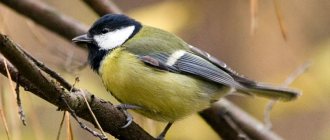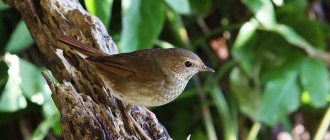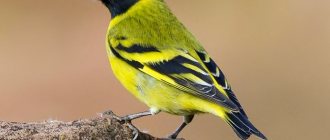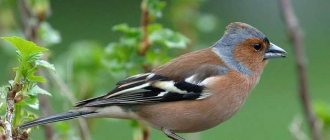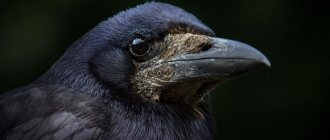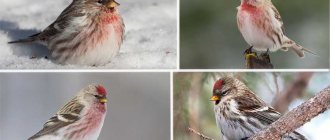White crane bird. Lifestyle and habitat of the white crane
The white crane (or Siberian Crane) is a bird that belongs to the crane family and the order Crane-like animals, and is currently considered the rarest species of cranes living exclusively in Russia.
You can't find her anywhere else in the world. Perhaps this is why the experiment of leading Russian ornithologists to save this rare bird was led directly by Russian President Vladimir Putin. This project is called with a beautiful slogan “Flight of Hope”. Today, the Siberian Crane is not only included in the Red Book, but is also recognized as one of the rarest species in the entire world fauna.
Population status and conservation
Siberian cranes are endangered and are included in the international Red Book of the International Union for Conservation of Nature and the Convention on International Trade in Animals CITES, as well as the Red Book of Russia. Currently, the size of the Yakut population of the species (in the wild) is estimated at approximately 2900-3000 individuals. A critical situation has developed with the West Siberian Siberian Cranes - there are about 20 individuals left in the wild.
Today, the Siberian Crane is not only included in the Red Book, but is also recognized as one of the rarest species in the entire world fauna.
Features and habitat
The Siberian Crane is a white crane whose height reaches 160 centimeters. The weight of adult individuals ranges from five to seven and a half kilograms. The wingspan usually varies from 220 to 265 centimeters. Males are often slightly larger than females and have a longer beak.
The color of white cranes (as you can easily guess from the name of the bird) is predominantly white, the wings have a black tip. The legs and beak are bright red. Juveniles often have a reddish-brown color, which later becomes noticeably lighter. The bird's cornea is usually pale yellow or red.
The beak of the Siberian Crane is considered to be the longest among all other representatives of the crane family, at the end of which there are sawtooth-shaped serrations. The front part of the head of these birds (around the eyes and beak) contains absolutely no feathers, and in most cases the skin in this area has a pronounced red tint. The eyes of white crane chicks are blue at birth, which gradually begins to turn yellow over time.
are found in Russia , but are actually not found anywhere else on the rest of the surface of our planet. They are distributed mainly in the territory of the Komi Republic, the Yamalo-Nenets Autonomous Okrug and the Arkhangelsk Region, forming two separate populations that are isolated from each other.
Siberian cranes leave Russia exclusively for the wintering period, when flocks of white cranes make long flights to China, India and northern Iran. Representatives of this population settle mainly around various reservoirs and swamps, since their paws are perfectly adapted for moving on viscous soils.
the home of a white crane on your own, since they prefer to be located in the middle of lakes and swamps, surrounded by a wall of impenetrable forest.
Character and lifestyle
Of all the other representatives of the crane family, it is the Siberian Crane that stands out for the high demands it places on its habitat. Perhaps that is why they are currently on the verge of extinction.
Although it is safe to say about the white crane that this bird is considered very timid and avoids close contact with humans, at the same time it can be extremely aggressive if there is a direct threat to its home or its own life.
White crane in flight
The Siberian Crane is active almost throughout the day, devoting no more than two hours to sleep, during which it stands on one leg, hiding the other in the feathers on its belly. During the resting period, the head is located directly under the wing.
Since Siberian Cranes are very cautious birds, they usually choose a place to sleep right in the middle of the water surface, away from bushes and other shelters behind which predators can hide.
Despite the fact that these birds are very active and sleep only a couple of hours a day, and are also kind of champions in the range of seasonal migrations (the duration of flights often reaches six thousand kilometers), during the wintering period they are not so active, and at night They prefer to rest for days.
The cry of white cranes is very different from all other members of the family, and is drawn out, high and clear.
Listen to the cry of the white crane
WHY IS IT LISTED IN THE RED BOOK
In the wild, there are a maximum of 3,000 white cranes. In captivity, several thousand of these birds are kept. White cranes and Siberian Cranes are on the verge of extinction, so many ornithologists are concerned about this problem and are helping with all their might. The issue of Siberian Crane protection began to be closely addressed in 1970. Since that time, reserve funds and many nurseries have been created where scientists raise cranes from eggs. Ornithologists even train chicks to fly long distances.
Hunting for white cranes is prohibited, since the Siberian Crane is listed in the Red Book of Russia, the Red Book and the Convention on International Trade in Endangered Species of Wild Fauna and Flora.
Beautiful white crane - Siberian Crane! Unfortunately, we have to talk about it not on the pages of a popular publication about the life of birds, but in the Red Book of the World. Today, there are about 3,000 birds left in the wild, and the number of individuals in the West Siberian population is simply critical - 20 cranes! Several thousand more Siberian Cranes are kept in zoos and nurseries in Russia, Belgium, the USA and China.
Oil production, transformation of the natural environment, drainage of swamps, high demands of the species on certain conditions, strong dependence of birds on the disturbance factor - these are not all the reasons for the sharp decline in numbers. The Siberian Crane avoids humans in every possible way and can leave the nest at the slightest disturbance. Therefore, part of the clutches remains deprived.
For a long time, scientists had very little information regarding the lifestyle, biology and ecology of this species. Only in the early 1970s. XX century, when the International Foundation for the Conservation of Cranes was founded in the USA, the situation moved from a dead point. In 1979, a special nursery for Siberian Cranes appeared at the Oksky State Nature Reserve.
We invite you to read: White-naped crane is... What is White-naped crane?
Description
If you look at the Siberian Crane from a distance, you won’t see any special differences, but if you look at it up close, the first thing that catches your eye is the large size of this bird. The weight of the white crane reaches 10 kg, which is twice the weight of other birds of the crane family. The growth of the bird is also considerable - up to half a meter in height, and its wingspan up to 2.5 meters.
p, blockquote 3,0,1,0,0 –>
Its distinctive feature is the bare part of the head, without feathers, the whole of it, up to the back of the head, is covered with red thin skin, the beak is also reddish, it is very long and thin, and its edges have small saw-tooth serrations.
p, blockquote 4,0,0,0,0 –>
The body of the crane is covered with white plumage, only the tips of the wings have a black stripe. The paws are long, bent at the knee joints, and red-orange. The eyes are large, located on the sides, with scarlet or golden irises.
p, blockquote 5,0,0,0,0 –>
The life expectancy of Siberian Cranes is 70 years, although only a few live to an old age.
p, blockquote 6,0,0,0,0 –>
Habitat
The Siberian Crane lives exclusively on the territory of the Russian Federation: two separate populations were recorded in the Yamalo-Nenets Autonomous Okrug and in the Arkhangelsk Region. It is endemic.
p, blockquote 7,1,0,0,0 –>
p, blockquote 8,0,0,0,0 –>
The White Crane chooses India, Azerbaijan, Mongolia, Afghanistan, Pakistan, China and Kazakhstan as wintering places.
p, blockquote 9,0,0,0,0 –>
Birds prefer to settle only near bodies of water; they choose wetlands and shallow waters. Their limbs are perfectly adapted for walking on water and bumps. The main condition for the Siberian Crane is the absence of a person and his dwellings; he never lets people get close, and when he sees them from afar, he immediately flies away.
Range and habitats
The Siberian Crane nests exclusively in Russia. Two isolated populations of this bird have been noted: the western one in the Arkhangelsk region, the Komi Republic and the Yamalo-Nenets Autonomous Okrug, and the eastern one in the north of Yakutia. The first population, conventionally called “Obskaya,” is limited in the west by the mouth of the Mezen River south of the Kanin Peninsula, in the east by the floodplain of the Kunovat River and the lower reaches of the Ob in the Yamalo-Nenets District. In winter, birds of this population migrate to the wetlands of India (Keoladeo National Park) and northern Iran near the coast of the Caspian Sea (Shomal). The range of the eastern population lies in the interfluve of the Yana, Indigirka and Alazeya rivers in Yakutia; For wintering, these birds fly to China, to the valley of the Yangtze River in its middle reaches.
In Yakutia, the Siberian Crane nests in uninhabited, hard-to-reach areas of the tundra, in heavily humid flat areas; in the Ob region in the middle of swampy swamps surrounded by oppressed forest.
Lifestyle and reproduction
White cranes are agile and active birds; they devote all their time during the day to searching for food. They spend no more than 2 hours sleeping, and always stand on one leg and hide their beak under the right wing.
p, blockquote 11,0,0,1,0 –>
Like other cranes, Siberian Cranes are monogamous and choose a mate for life. The period of their mating games is very remarkable. Before mating begins, the couple performs a real concert with singing and dancing. Their songs are amazing and sound like a duet. While dancing, the male spreads his wings and tries to hug the female with them, who keeps her wings tightly pressed to her sides. During the dance, lovers jump high, move their legs, and throw branches and grass up.
p, blockquote 12,0,0,0,0 –>
They prefer to nest among bodies of water, on hummocks or in reeds. Nests are built by joint efforts, on a hill, 15-20 cm above the water. There are often 2 eggs in a clutch, but under unfavorable conditions there may be only one. The eggs are incubated by the female for 29 days, and the head of the family spends all this time protecting her and the children from predators.
Reproduction of Siberian Cranes
White cranes choose one partner during mating games; they are completely monogamous . These birds arrive at their nesting sites in May. The mating games of these majestic birds are accompanied by songs and dances. Having chosen the female he likes, the male lifts his head and in a thin, clear voice emits a series of melodic drawn-out sounds. Then a dance is performed, consisting of flapping wings, jumping, and tossing branches. At this time, the female observes the courtship, pressing her wings tightly to her body.
White cranes nest in places that are clearly visible. Parents stock up on drinking water and food in advance. They build nests in a coordinated manner; both male and female are involved. Most often, cranes try to build a nest in a reservoir with shallow depth. This allows you to protect your offspring from those who like to feast on other people's eggs.
In total, the female lays no more than 2 eggs at a time . The eggs are gray in color, with dark spots on the shell. The incubation period lasts about 29 days, then the chicks hatch. It is noteworthy that up to six months the chicks have a blue cornea; it changes with age. From the first days, the brood must learn to protect itself from danger. The weak die, and only one chick grows into an adult. After 70 days, the chick’s plumage becomes light brown, while the Siberian Crane becomes white only in the third year of life.
What does the Siberian Crane (white crane) look like? Description and photos
The Siberian Crane bird reaches a height of about 140-160 centimeters, the wingspan is 210-230 centimeters, and the weight of the crane is from 5 to 8.5 kilograms. The front part of the white crane's head is devoid of feathers. In adult cranes this place is colored red. The beak of the Siberian Crane is very long, it is longer than that of other species, it is red in color and has a saw-toothed serration. The plumage is almost completely white, except for the black flight feathers on the wings. Young Siberian Cranes have brownish-red plumage. The cornea of cranes' eyes is red or pale yellow. The paws are long pink-red. The bird's lifespan is about 70 years.
Where does the Siberian Crane (white crane) live?
Birds such as the white crane are very demanding of their habitat. Two separate populations of cranes were discovered. One population lives in the Arkhangelsk region of Russia, and the second lives in the Yamalo-Nenets Autonomous Okrug. The Siberian Crane, which breeds only in Russia, winters in India, Azerbaijan, Mongolia, Afghanistan, Pakistan, China and Kazakhstan. The Siberian Crane bird is larger than all other types of cranes and leads an aquatic lifestyle. This makes saving this species from extinction a difficult mission. Their beak and legs are designed for wetlands. Long legs make it easy to move over bumps and sticky soil. The white crane is wary of humans: if it notices a person on the horizon, it leaves the nest. In such a situation, the Siberian Crane may even abandon eggs or already hatched chicks.
What does the Siberian Crane eat?
The Siberian Crane bird feeds on animal and plant foods. White cranes are omnivores and can eat almost anything. In summer they eat seeds and berries, cranberries, fish, eggs and chicks of other birds, insects, underwater parts of cotton grass and sedge, small vertebrates and rodents, as well as frogs and small birds. In winter, during migration, the Siberian Crane consumes plant foods such as tubers and rhizomes of aquatic plants.
Nutrition
As a rule, Siberian Cranes eat throughout the day. They eat both animal and plant foods .
Their long legs do not get stuck in the marshy bottom, which gives them maneuverability when moving. Due to the structure of their head, they can easily submerge it under water and collect plants. They use their beaks to filter the seeds from the water. They also eat tubers, rhizomes, and berries. During the mating season, like other birds and animals, Siberian Cranes feed on protein foods. In this case, they catch rodents, frogs, insects and small birds. Interestingly, Siberian Cranes almost never eat fish. During wintering they eat mainly plant foods.
It is noteworthy: cranes never fly into agricultural lands. This makes them a favorite among villagers.
Reproduction of white cranes
Siberian cranes are monogamous birds. At the end of May, a pair of Siberian Cranes arrives at their future nesting site. Like other crane species, the pair celebrates their union by singing a duet. The call of white cranes is high, drawn-out and clear, which makes it stand out from other species. Individuals throw back their heads and emit a series of melodic sounds, complex and drawn-out. During song, the male spreads his wings, but the female keeps them folded all the time. At the same time, the Siberian Cranes perform a dance that includes bowing, jumping, tossing twigs and flapping their wings.
White cranes make their nest in a clearly visible area, with a supply of fresh water, in the tundra or taiga, in water with a depth of 30-40 centimeters. At the same time, the Siberian Crane nest itself rises 15-20 cm above the water level. Both parents build the nest. Usually two gray eggs with dark spots are laid. In a bad year they can get by with just one. The female white crane incubates her offspring for about 29 days, and the male guards them. The hatched chicks engage in a difficult struggle for survival; only the strongest chick survives. After 70-75 days, it acquires brown-red feathers. White plumage appears in Siberian Cranes only at 3 years of age.
Reproduction
Siberian cranes reach sexual maturity at 6-7 years, the breeding period can last more than ten years. These birds are monogamous and form permanent pairs.
They prefer to nest in open areas of swamps among taiga forests.
The distance between nests in Yakutia is from 2.5 to 75 km, but usually 14-20 km. In the Ob population, nesting density is higher: the minimum distance between nests is 1.5 km, the maximum is 10 km.
The Siberian Crane's nest is a compacted flat platform made from sedge stems and located directly in the water. Siberian cranes can nest in the same nests for many years, and the diameter of old nests sometimes reaches 120 cm. Like other cranes, they are strictly territorial and actively defend their nesting territories.
The pair usually arrives at the nesting site at the end of May. Like other species of cranes, a successful pair celebrates their union by singing together, which is usually uttered with the head thrown back and is a series of complex, drawn-out melodic sounds. In this case, the male always spreads his wings, and the female keeps them folded. In addition, the action is accompanied by characteristic dances of the male and female, which include jumping, flapping wings, tossing twigs and bending. Although dancing is most associated with courtship, it is thought to be a common behavior of cranes and may act as a calming factor against aggression, relieving tension, or enhancing marital bonding.
The nest is made in swampy or heavily humid areas of the tundra or taiga, with preference given to a hard-to-reach, clearly visible large area with an abundance of fresh water. The nest is built directly in water with a depth of 30-40 cm and rises above it at a height of 12-15 cm. The building material for the nest is sedge or other grass, which is piled up, compacted well, and a small depression is made on top. The male and female build the nest together.
The female usually lays 2 gray eggs with dark spots weighing about 215 g [5] with an interval of 2 days, although in an unfavorable year the clutch may consist of only one egg. Laying occurs in late May - mid-June, the incubation period lasts about 29 days. Both parents incubate, but the female spends most of her time in the nest. The main job of protecting the nest falls on the male.
As a rule, only one chick survives, since competition for survival arises between the two chicks, which usually ends in the death of one of them. Full plumage of the chicks occurs after about 70-75 days.
"Flight of Hope"
Since the mid-1990s, more than 100 white cranes have been released into their natural habitat. Unfortunately, the survival rate of Siberian Crane chicks raised in an artificial environment does not exceed 20%. The reason for such a high mortality rate is the lack of flight training and navigation orientation. American scientists solved this problem; they came up with the idea of guiding the chicks along the route using a motor hang glider. Subsequently, a similar program called “Flight of Hope” was developed in Russia. In 2006, 5 motorized hang gliders were built, with the help of which young Siberian Cranes were led along a long route. The birds were brought to the habitat of the gray cranes, and the Siberian Cranes went with them to wintering. In 2012, Russian President Vladimir Vladimirovich Putin personally participated in this program. But, unfortunately, this time the gray cranes did not accept the sturgeon chicks, and therefore 7 crane calves were brought back to the Belozersky federal reserve in Tyumen.
"Flight of Hope"
Since the mid-1990s, more than 100 Siberian Cranes have been released into the wild. However, the mortality rate of wild crane chicks in nature during the first year of life is 50-70%. The survival rate of artificially raised crane chicks does not exceed 20%. Therefore, scientists began to look for more effective methods to increase the survival rate of introduced chicks.
It is very important for the sterling chicks to learn long-distance flight techniques and master their migration routes. The lack of full flight and navigation training significantly reduces the chances of survival of introduced chicks. American specialists managed to solve this problem: they decided to guide the chicks along the route of future migration using a motorized hang glider controlled by a person. The essence of the method is that, as a result of special training, crane babies raised in the nursery perceive the trike as the leader of the flock and follow it to the wintering site, making rest stops in pre-selected suitable places. With this scheme, more than 90% of introduced chicks return independently to the place of release after wintering. For the first time, such flights to train birds began to be carried out by the Italian hang gliding researcher Angelo D'Arrigo, who tragically died in 2006.
In 2001-2002, Russian ornithologists studied in detail the possibility of using the American method to restore the West Siberian population of the Siberian Crane and found it promising. As a result, a special program was developed to introduce the new method, which was called “Flight of Hope.” The program participants are the Ministry of Natural Resources of the Russian Federation, specialists from the All-Russian Research Institute of Nature of the Ministry of Natural Resources of the Russian Federation, the Oka Biosphere State Reserve, the oil and gas industry, the Sterkh Foundation, as well as scientists from more than ten countries around the world. The national coordinator of the Siberian Crane rescue programs is Alexander Sorokin, head of the biodiversity department of the All-Russian Research Institute of Nature of the Ministry of Natural Resources of the Russian Federation.
In 2006, five modern motorized hang gliders were built, and with the help of them the Siberian Cranes were taken on a long flight. The birds were brought from Yamal to Uzbekistan, where they joined the wild gray cranes and went with them to wintering. Another attempt to control the migration of Siberian Cranes was made in 2012 with the personal participation of the President of the Russian Federation V.V. Putin. A flock of six Siberian Cranes was brought to the Belozersky federal reserve in the Tyumen region, but this time the gray cranes did not accept the Siberian Cranes.
To raise people's awareness of the problem of the endangered population of West Siberian Siberian Cranes, in April 2012, a unique online broadcast from the Siberian Crane nests of the Oksky Nature Reserve was launched - “Flight of Hope. LIVE." In real time, without takes or editing, you can observe the life of two pairs of adult Siberian Cranes - from the birth of their offspring to training the chicks to fly a hang glider.
Sources: ru.wikipedia.org, moscowzoo.ru
Similar articles:
Grouse
Black grouse, or black grouse, or field grouse (lat. Lyrurus tetrix), is a common bird of the pheasant family, living in the forest, forest-steppe and partly steppe zones of Eurasia, including in Russia. Throughout the entire range there are sedentary or nomadic birds; settles on forest edges, along the edge of the forest, in the valleys of large rivers. Object of hunting...
Red Book of the Republic of Sakha (Yakutia). Birds. part 2
…
Capercaillie
The capercaillie (lat. Tetrao urogallus) is a large bird from the pheasant family, the order Galliformes. The name “grouse” is due to the well-known characteristic of the male mating season, which loses sensitivity and vigilance, which is often used by hunters...
White Owl
White owl, or polar owl (lat. Bubo scandiacus, Nyctea scandiaca). In Yakut - kaar-ebe, which means snow grandmother...
Wintering birds of Yakutia
The nature of Yakutia is beautiful and harsh. Our republic occupies more than three million square kilometers. A wide variety of landscapes are found on its territory. And besides, there is a rich fauna of birds and mammals inhabiting Yakutia. The avifauna of Yakutia is represented by more than 291 species of birds, and the winter avifauna is represented by 48 species. And winter in Yakutia is long and fierce. There is no other place on the planet where the amplitude of temperature fluctuations would reach one hundred degrees: frosts in the sixties, heat in the forties. Such a harsh climate does not frighten...
Pink seagull
The pink gull is such a rare bird that its discoverers, risking their lives, went to look for it in the cold northern waters, equipping special expeditions. The pink gull belongs to the gull genus of the gull family. This small, beautiful and fragile bird lives in the harsh regions of the Arctic. She chooses nesting sites in the lower reaches of cold northern rivers. She builds nests on the islands and banks of these deep streams flowing into the Arctic Ocean. Indigirka, Kolyma, Yana, Anadyr - these are the rivers that...
